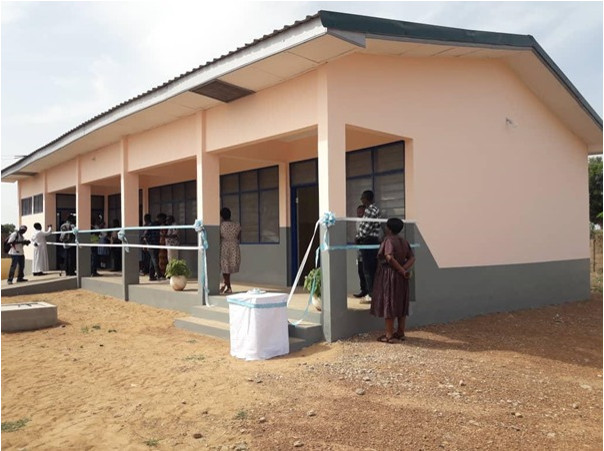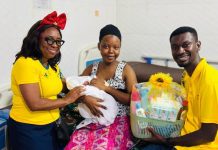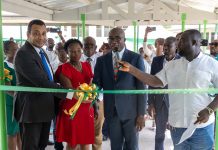1. Introduction and Background
Many countries in Africa and particularly sub-Saharan Africa, are recording alarmingly high numbers of unemployment, skill gap and socio-economic exclusion among disabled and deprived young populations.
This is particularly evident in large urban and rural districts/municipalities like the Northern Region of Ghana, where the prevalence of disability and youth unemployment has been reported to be between 13-40%.
Inappropriate school environments, lack of skills training and access to labour market, coupled with socio-economic forces, compel these young people into street begging for survival. There is the need for initiatives to close these skills and employment gap.
The UNESCO Conference of 2008 proclaimed that: “ordinary schools which embark on educating learners with the principles of inclusive education have the most effective way of combating discriminatory attitudes, creating welcoming communities, building an inclusive society and achieving education for all learners in their communities.‟
It means that schools can provide effective education to most of these learners and can improve the efficiency and ultimately the cost-effectiveness of the entire education system. Inclusive education means that all students attend and are welcomed by their peers and teachers in age-appropriate, regular classes and are supported to learn, meaningfully contribute and participate in all aspects of activities in the school. Thus, inclusive schools are necessary in order to achieve or drive inclusive education agendas.
An inclusion school implies that all children are accepted within the classroom environment and that they feel respected and equal to each other, regardless of their language, race, religion, ethnicity or disability. The global call for inclusive education system is in recognition of the human rights of all and to provide all young people with the most appropriate learning environments and opportunities for them to best achieve their potential.
From the evidence of the inclusive project at St. Mary’s Vocational Training Institute, it is instructive to note here that all young people can learn and attain their full human potentials when they are given sufficient opportunities, coupled with effective teaching, friendly environments and appropriate resources. As countries across the world progress towards inclusive education, the Ghanaian education system has made little strides in this regard.
Evidence from the Ghana’s inclusive education (IE) policy suggests there has been a progressive expansion of IE delivery from 29 districts in seven regions in 2011 to only 46 districts nationwide. Although IE programme has included training in usage of appropriate pedagogy for district staff, headteachers and teachers working, coverage has been minimal at best.
Although children aged 19-24 years report high proportion (27.7 per cent) of disability, technical and vocational education access among these youthful group remain remarkably low. Besides, adult literacy levels among PWDs are low (56.5 per cent).
This is evidence of decades of marginalisation against PWDs, who sadly, are currently among the poorest and most vulnerable in Ghana. Literacy rate of males with disability (66.5 per cent) are higher than females with disability (47.9 per cent). This is perhaps, to a large extent, inclusive education in Ghana is understood and practised at the level of eradicating segregation.
This has resulted in mainstreaming without the necessary resources in the basic and second cycle schools (the concern of this paper is with technical and vocational schools). A deeper understanding of inclusive education should be a practice that embraces and allows for differentiated curricula, teaching pedagogies, learning and assessment in welcoming school environments.
The school system must be thus be reconfigured to recognise diversity and embrace all young people irrespective of race, gender, disability, medical or other needs. Societies, institutions and governments need to give equal access and opportunities and get rid of discrimination and intolerance (remove barriers) attitudes which continue to widen inequality of access to education.
In an attempt to do so, Ghana fully endorsed and supported the “Education for All initiative” through national and international commitments and dedicated itself through the signing of the UN Convention on the Rights of Persons with Disabilities (RPWDs) and the Salamanca Accord among others. Foremost of Ghana’s national commitments is enshrined by Article 25 (1) of the 1992 Constitution which stipulates that all persons shall have the right to equal educational opportunities and facilities.
Similarly, the Education Strategic Plan (2010-2020) stipulates that, the Ministry of Education shall provide education for those with physical and mental impairments, orphans, and those who are slow learners, by including them, wherever possible, within the mainstream formal system or, only when considered necessary, within special units or schools. From the international cycles, Ghana is heralded as amongst the first countries to ratify the United Nations Convention on the Rights of the Child (CRC) in February 1990.
Thus. Ghana pledged its commitment to ensure that all young people are given the opportunity to exercise their rights. Besides, the country remains a signatory to the UN Convention on RPWD in 2006, which requires all member states to ensure equal access to primary and secondary education, vocational training, adult education and lifelong learning for all. Again, the Salamanca Statement and Framework for Action (UNESCO, 1994) enjoins Ghana to ensure that persons with special education need to have access to regular schools which should accommodate them within a child-centred pedagogy capable of meeting these needs.
Despite these noble global commitments and efforts, the realities in the technical and vocational education sector suggest deprivation and marginalisation continue to prevail. Quite recently, the Free Senior High School policy, though resulted in increased enrolments in mainstream schools, due to infrastructural constraints, disabled young people are unable to benefit equally from the policy. The lack of corresponding investment in IE among technical and vocational schools is preventing such schools from enrolling youth with disabilities.
Drawing from the inclusive education practice at St. Mary’s Vocational Training Institute, this paper argues that schools can become prerequisites for inclusion and education access where enabling conditions and training possibilities are provided for all students. It first interrogates the nature of schools’ environment in Ghana, the background and local context of the school, the socio-economic context, institutional and wider societal changes needed to enable the practice of inclusive education.
Thereafter, the paper deliberates on the meaning of inclusive education and a model project implemented at St Mary’s Vocational Training Institute, with emphasis on describing the activities, the impact of the project, donors and current admission of the beneficiaries of the project.
1.1 Schools environment creating inequality of education access
Since transition into democracy, Ghana’s education sector moved from state of separatism to social justice and inclusivity. The national policy on inclusive education in Ghana emphasises inclusion of all learners in the education system, regardless of disability, race, learning style, HIV status etc. This was envisaged to bring about change to classroom dynamics, where the tradition of the classroom is based on reading and writing for “normal‟ learners, and diverse learning needs related to impairment is “abnormal.‟
This vision has remained a “wishful thinking” as disabled children continue to experience neglect and deprivation, arising from lack of supportive school structures, persistency of traditional curricula and teaching pedagogies. The majority of young people with special needs still find themselves alienated and excluded from full access to the curriculum. This is contrary to the present education policy which is rooted in the principles of social justice, human rights and inclusivity in the classroom.
The current state of classrooms in most schools are structured for the “able” learners; there must be a point where we start accounting for the differences among “differently abled” youth and deprived children. Moreover, structures in our societies favour a particular group of people wrongly perceived as “abled,” leaving another group perceived to be “disabled” to remain in the margins. The norm in learning in mainstream schools is reading and writing not skills training. Therefore, the school system either indirectly deprives or disempowers young people by putting the measure of success on reading and writing to the neglect of skills training.
Unfortunately, the smart and intelligent kid in Ghana is the one able to read and reproduce knowledge. Less value is placed on skills training thus, making technical and vocational skills training a secondary option for many young people. Worst still, deprived children and disabled youth become disillusioned and hopeless of a future, because the physical environments of the school systems are not often suitable while teachers and school managers lack competencies in IE to effectively handle trainees with disabilities.
2. St. Mary’s Vocational Training Institute
St. Mary’s Vocational Training Institute (SMVTI), Tamale, was established by Mrs Philomina Oppong in 1975 with the aim of providing equal opportunities for girls who completed middle school but could not further their education due to factors such as teenage pregnancy, poverty and poor academic performance. Enrolment sharply increased in the early 80s, necessitating the construction of new blocks by the then Archbishop of Tamale, His Grace Peter Perekuu Dery. Since then, SMVTI has received generous donations from donors and philanthropists, including CEBEMO, Rev Fr Martin Balaman, Ghacem Cement Foundation and the National Lotteries.
Other donors from Germany and The Netherlands supported the institute with equipment, furniture, food, accommodation, teaching and learning materials in the early 90s. In 2000, SMVTI was affiliated to the National Vocational Training Institute (NVTI), the national education body responsible for managing, supervising, examining and issuing certificates to trainees who graduate from the school.
Six courses are accredited to be run by the institute; Dressmaking, Weaving, Cookery, Motor Cycle Repairs, Electrical Installation and Secretariat/ICT. At SMTVI, the courses are designed for four years, leading to an examination and NVTI certificate in either; Foundation; Certificate I and II; Proficiency I and II; or Intermediate (for Fashion & Designing, and catering programmes only.
After the intermediate training, students can progress to pursue diploma and or Higher National Diploma (HND) programme at the Polytechnic level. IE project at St. Mary’s includes trainees who are academically weak and are advised to focus only on proficiency level training which is essentially a hands-on-training aimed at developing their skills and talents on the job. In line with UNICEF, inclusive education, the IE project includes the practice of promoting the participation and competence of every learner, which aims at forming an inclusive society in which differences are respected and valued, and where discrimination and prejudices are actively combated in school policies and practices.
The IE project was envisaged to help the development of next generation of young people in the following ways: Young people with specific challenges make gains in cognition and social development and physical motor skills. At St. Mary’s the project envisages that children do well when their general environment is adjusted to meet their needs. Young people with more typical development challenges gain higher levels of tolerance for the people with differences. They learn to make the most of those they interact with.
In an inclusive classroom, the philosophy of inclusion thus hinges on helping students and educators to become better members of a community by creating new visions for communities and for the school in particular. Inclusion, in this context, is about membership and belonging to a wider community.
This means that education and school structures, systems and learning methodologies must meet all students’ needs at various educational levels and must offer different kinds of learning support. What this implies is that educators and educational institutions must, in this regard, acknowledge and respect the differences in students, whether due to age, gender, ethnicity, language, class, disability and/or HIV status.
2.1 Understanding the local context and needs
To ascertain the current practice of inclusive education, identify the environmental and broader socio-economic conditions prevalent in the school, a team from Don Bosco visited St. Mary’s June 2015 to undertake a pre-feasibility study. The outcome of this research established a baseline towards the implementation of a project titled: “Inclusive Vocational Education For Socially Underprivileged and Physically Handicapped Youth In Northern Ghana”. This intervention was meant to promote social inclusion, offer equal career training and education opportunities for deprived students and young people who are disabled and are within the three northern ecological area.
In pursuit of this end, the team consulted Associations of Persons with Disabilities (PWDs), Ghana Education Service, National Vocational Training Institute, Department of Social Welfare, the Catholic Education Directorate, traditional authorities, religious bodies and local government agencies, all of which expressed interest and the need for the project to ensure deprived and disabled young people in the north are offered equal training opportunities and integration into the labour market.
Consequently, the stakeholder consultations resulted in confidence building, ownership and insertion of the project into mainstream vocational and technical education curricula offered by the National Vocational Training Institute (NVTI). After a thorough search and engagement with different technical and vocational schools in the northern region, St. Mary’s was considered by the research team to implement the project.
The selection of the school was based on indicators including acceptance of the project, central location and easy access of the school to the beneficiaries, environmental factors, availability of training programmes which were of interest to the target beneficiaries, and finally, capacity for sustainability post-implementation of the project. Upon exhaustive consultation, the research findings established that the SMVTI environment was not friendly and welcoming to disabled trainees. Most disabled children were turned away by authorities because they simply could not have access to existing learning facilities.
There were little to no appropriate tools/equipment, while accommodation, lack of learning materials compelled the school to deny admitting the target groups.
There was a general lack of knowledge among management and teachers (making teacher skills upgrading relevant), while the broader environment marginalised and stereotyped against children with disabilities. Street begging and menial jobs became alternative sources of livelihood for deprived and disabled children. Thus, initiatives for inclusive training are necessary to change the existing situation in both the school and within the broader environment.
There was the need to undertake the following measures in the school; develop teachers capacity in inclusive vocational education pedagogy; need to retool and provide equipment support for departments including weaving, dressmaking and catering departments; need to adapt and rehabilitate the existing structures, making them disability friendly; need for new girls dormitory block, and finally, access pathways and ramps to all school facilities.
2.2 Socio-economic marginalisation of deprived children and disable youth
The researcher team further found wider socio-economic gap, neglect and discrimination against the target group of children living with disabilities. A total of 1,000 socially deprived and disabled children and youth (aged 14-25) were identified through snowballing approaches and in contact with the PWD associations and the Department of Social Welfare.

An assessment of their living conditions revealed they were from the poorest of the poor families, usually from the lowest strata of society. They did not have access to education/training opportunities and were confronted with both social and economic neglect, insecurity, no/poor housing and sustainable employment options. The realities of high cost of living, exclusion, stigmatisation, stereotyping, rising poverty and helplessness compelled majority into isolated and segmented life, with others engaged in street begging for their next meal.
Meanwhile, existing misperceptions, traditions, customary practices, cultural insensitivities, superstitious beliefs and other negative attitudes, continued to affect them, their physical growth, emotional and psychological wellbeing, especially those at the rural levels. The living situation of these deprived youth and children contradict the worldwide inclusive education policy, the persons with disability Act Ghana, 2006 Act 715, the domestic violence Act 732, and Goal 4 of the Sustainable Development Goal (SDG) which seeks to achieve inclusive and quality education for all and promote lifelong learning for vulnerable and segmented groups who cannot afford quality education in their communities.
Ghana is likely to miss the Goal 4 of the UN Agenda 2030 if sustainable and inclusive school-based initiatives are not developed to redress continued societal neglect, spatial and infrastructural gaps which continue to deprive disabled youth who otherwise could have become useful to themselves and society if trained and reintegrated into the labour market.
3. Implementation of Inclusive education at St. Mary’s Vocational Training Institute
The inclusive education project at St. Mary’s Vocational Training Institute forms part of a global initiative titled “Inclusive education in Action: Worldwide experiences,” which is currently being implemented by different African countries, including Burkina-Faso, Cameroun, Ethiopia, Germany, Ghana, Niger, Sierra Leone, South Africa, and Tanzania. The Ghana version of inclusive education project titled: “Inclusive Vocational Training For Physically Disabled and Socially disadvantaged young people in northern Ghana,” is implemented by Don Bosco Youth Network (DBYN), a non-governmental organization, established by the Salesian of Don Bosco (a religious congregation of the Catholic Church). DBYN is located at Tema, Ghana.
The NGO seeks to promote the welfare of vulnerable children and youth, offering them quality education and skills training for sustainable livelihoods. The four-year (2018-2021) multi-donor IE project is funded by Africa Action/ Deutschland (aa/D-Germany), Engagement Global (EG-Germany) and the Federal Ministry for Economic Cooperation and Development (BMZ-Germany).
In Ghana, the overall national aim for the project is to enhance the socio-economic conditions of approximately 250 physically handicapped and socially disadvantaged young people in regions up north by creating enabling institutional environment and training possibilities for them in preparedness towards career development, job creation and social re-integration.
In line with this, St. Mary’s Vocational Training Institute is part of a five other preselected vocational/technical institutions in the five regions up north which have been materially, structurally, infrastructurally and pedagogically prepared as Inclusive Education Centres for vocational and technical education. The teaching/non-teaching personnel capacities have been upgraded while curriculum have been adapted to fit-for purposes of inclusive training. Again, dormitory facilities have been provided while tailor-made equipment and tools were supplied and installed, thus augmenting practical training and skills development
3.1 Impact in the school
The project has had different levels of effects in the physical structures and school environment. Foremost, ramps and pathways have been created to all school structures, while sensitisation of teachers, management and students has enabled the creation of a friendly and inclusive learning environments in order to increase possibilities for admission and training of socially deprived and disabled young people.
The various departments (Dressmaking, Weaving, Cookery) have been retooled and now able to admit young people with disabilities. The public education and admission drive did not only increase awareness and acceptance of beneficiaries, but also made it possible to lessen the negative perceptions against young people with disabilities in the school.
Again, with the construction of a new girls’ dormitory block and the adaptation of physical facilities (ramps and pathways in the school), the project has provided accommodation access to more than 40 trainees who otherwise would have been denied skills training.
Again, management of the schools and teachers participated in both international and national training and workshops to share knowledge, best practices and experiences from other countries and school-based projects. Moreover, school management and support structures have been created to ensure the identification needs become structures for supporting physically disabled trainees.
Admissions have significantly improved across the project areas. A total of 450 trainees comprised hearing (98 youth), visual (178 youth), physically impaired (22), socially deprived (152), across the five northern regions have benefited from the IE project. These young people, who otherwise would have been deprived of skills and access to jobs, have been empowered and have/or due to be graduated with nationally accredited certificates to meaningfully contribute to the national development.
At St. Mary’s, teachers now have knowledge and skills in handling different categories of young people with physical disabilities. The training philosophies, approaches, and practical activities in the school have been re-adjusted in line with national inclusive learning curricula. More specifically, the training curricula has been adapted, with emphasis on proficiency development, to enable training and assessment possibilities for illiterate and or slow learners, thus minimising the rate of failure among disabled and deprived students who have literacy deficiencies.
Again, a school support team has been established while management of the school have been equipped and can now screen the target group, enabling them to easily identify, categorise and provide support (emotional, physical, health, etc.,) for beneficiaries with related health and physical impairments. At St. Mary’s Vocational Training Institute, students are no longer denied admission on grounds of physical disabilities. The institute has now become a “model” inclusive school in the northern part of Ghana, offering admissions and career-relevant training possibilities to deprived children and young people with disabilities.
3.2 Institutional and wider societal effects
The change envisaged was that empowering the targeted youth through vocational skills training will lead to self-independence and employment through the creation of sustainable and decent jobs, improve self-worth/dignity, social acceptance and thereby, possibilities for their reintegration and inclusion into the socio-economic sectors of their communities.
To break social and economic barriers at the community level, the project embarked on communication, advocacy and publication education drive in order to promote integration and social inclusion post-training of the beneficiaries. More tellingly, the idea and thrust for inclusive education was meant to create sustainable employment opportunities, facilitate the inclusion of the beneficiaries in the job market, engage national and local actors for enhanced public knowledge and understanding, leading to qualitative lessening of traditional and cultural barriers and gradual change in public attitudes towards the youth living in deprivation and those with disabilities. To achieve this, community mobilization became necessary.
The project engaged the public and communities through such events including sensitisation of parents during PTA meetings, engagement with the public during school graduation ceremonies and radio announcements in native languages spoken (Dagbanli, Gonja, Dagare, Gurune, Buli, Kasem, and Sissale) within the project catchment areas of northern Ghana. These initiatives significantly increased enrolments while disbanding negative perceptions and attitudes the communities had about young people with disabilities.
Again, the partnership with local and national stakeholders including PWDs, GES, NVTI, religious institutions and traditional authorities have inserted and streamlined the project into the broader national inclusive education policy and local development policies. The national recognition and ownerships of the project is significant for sustainability, scalability and continued government of Ghana support for beneficiaries of the project post-implementation.
To sustain these gains, the project intends to increase admission for physically disabled students by placing St. Mary’s Vocational Training Institute on the Computerised School Selection and Placement System (CSSPS). This way, instead of the current national admission process of assigning quotas to vocational and technical schools under the NVTI, admission could remarkably increase and youth with disabilities could be given wider access and choice if the school is placed for selection by trainees under the CSSPS.
4. Lessons and Way forward
The practice of inclusive education means a schooling system where all students attend (unrestricted access) and are welcomed by their peers and teachers, supported to learn, and participate in all activities of a school. Thus, inclusive education agendas and policies are necessary in order to create inclusive schools.
Schools can become prerequisites for inclusion and education access where enabling conditions and training possibilities are provided for all students. Achieving inclusive education delivery depends on the nature of schools’ environment, the background and local context of schools, the socio-economic context, institutional and wider societal changes needed to enable the practice of inclusive education.
The evidence of IE practice at St. Mary’s suggest IE is important to give careers hope and voice to the most vulnerable and deprived in society. An ideal IE school environment requires the need to overcome the wider socio-cultural and economic barriers which marginalize against vulnerable children and youth with disabilities.
At the school level, teacher training, appropriate tools and equipment, curricula adaptation and rehabilitation of school environment are thus essential prerequisites to establish inclusive schools. All children and youth (deprived or disabled, wealthy or poor) have right to education.
This can, however, be achieved where stakeholders (government, parents, civil society etc.,) are committed towards investing into the provision of education for all, irrespective of gender, race, disability or socio-economic status.
The researcher is the Technical Consultant at Don Bosco Youth Network West Africa.
Credit: Prosper Bazaanah






































